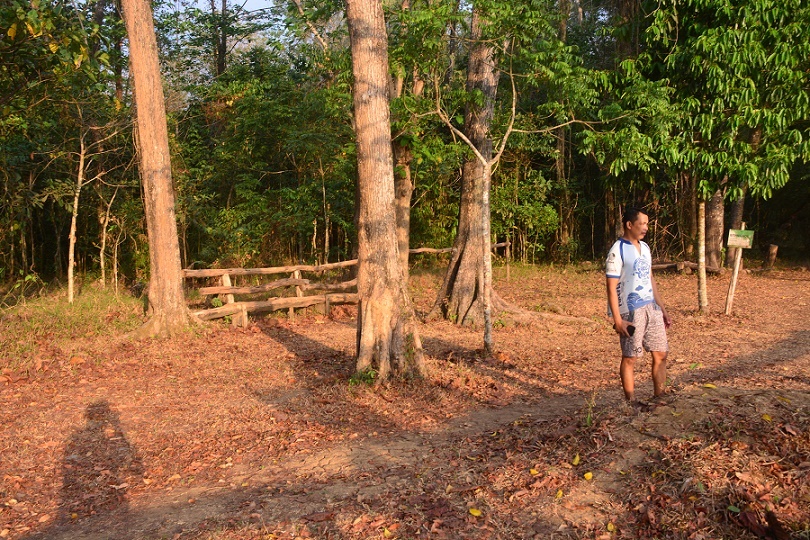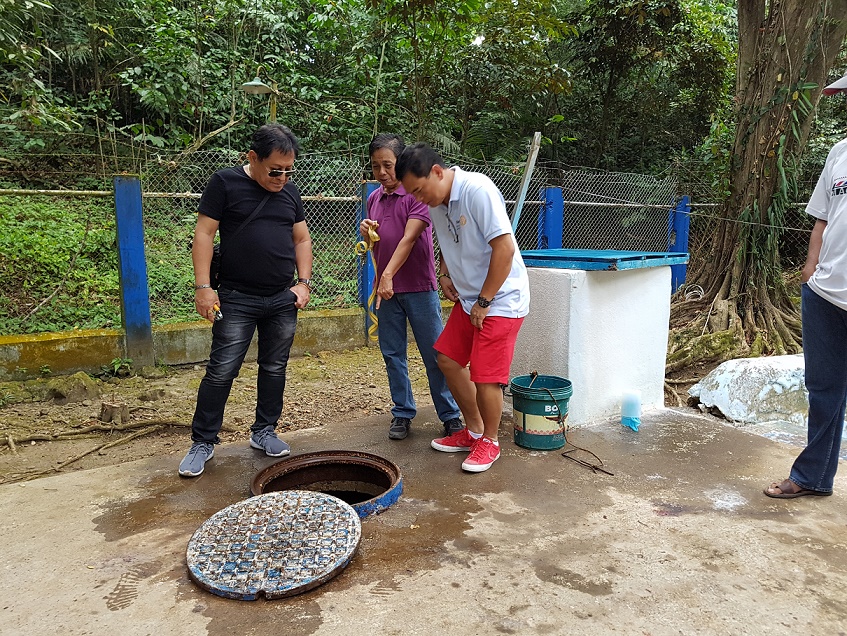One nourishes communities. The other has become a source of distress.
The Anayan-Rumangrap Watershed in Mt. Isarog in Camarines Norte provides sustenance to the population living in nearby communities, who in turn take care of it.
The La Mesa Watershed in Novaliches, on the other hand, is in a state of distress; people living in Metro Manila can feel it.
A watershed is a source of life. It is high ground from where water from the uplands flow into several channels.
The state of the watershed determines the water that goes to the land that is consumed by the whole population.
Water is essential in life. A human body needs water to function. In the same manner, water is a vital component of a community. Without water, there is no life.
The water crisis that recently hit Metro Manila hard brought into public attention the La Mesa Watershed, which is supposed to provide fresh water to over 12 million residents to the area as well as neighboring provinces.
The La Mesa Watershed
The La Mesa Watershed is not healthy, said Joanaviva Caceres-Plopenio, officer-in-charge and director at the Institute for Environmental Conservation and Research of the Ateneo de Naga University, during the March 22 celebration of World Water Day in Naga City.
A watershed’s ability to mitigate flooding during the wet season and provide water during the dry season – its adaptive capacity during stressful conditions – is the barometer by which a watershed’s health is gauged.
In this, the La Mesa Watershed seems to be failing, Plopenio said.

La Mesa Watershed Preserve Guide Roden Akbayan viewing the dry reservoir.
A 2013 vulnerability assessment by environmental scientist Cristino Tiburan Jr. cited two major issues with the La Mesa watershed: erosion and landside and the biodiversity loss which are being blamed on deforestation.
Programs have been undertaken to reforest the La Mesa Watershed in the past years. Unfortunately, policy consistency appears lacking.
The Manila Seedling Bank Foundation had a successful five-year reforestation program that started in 1978.Sadly, when the program ended in 1983, land conversion and illegal harvesting of trees resumed.
The Metropolitan Waterworks Sewerage System MWSS, the agency that is tasked to take care of the La Mesa Watershed has also been questioned by the Commission on Audit for its decision to sell a portion of the watershed to its own officers and employees.
The sale runs counter to Section II Article XII of the 1987 Constitution, which provides that “with the exception of agricultural lands, all other natural resources shall not be alienated.”
Despite the Constitutional prohibition, the Department of Environment and Natural Resources issued an Environmental Compliance Certificate for the sale, but Gina Lopez cancelled it in December 2016 when she became DENR head.
La Mesa Nature Preserve guide Roden “Denden” Akbayin said the area allocated for housing of MWSS officers and employees had been fenced, but no building or cutting of trees has happened.
Akbayin said that at the last accounting of families in the area in 2014, there were still 25 families of informal settlers inside the watershed. Kaingin, or slash and burn farming, still occurs though not as often as when he first started working there in 2000.
He said tree planting efforts continue. Old trees are sparse and may be found only in a few areas further into the interior of the watershed.
The Anayan-Rumangrap Watershed
Mt. Isarog in Camarines Sur was established as a national park in 1938. One of its watershed areas is the 317-hectare Anayan-Rumangrap Watershed.
It was going the same path as the direction the La Mesa Watershed is taking until the passage of the National Integrated Protected Areas System (NIPAS) Act in 1992 that listed Mt. Isarog as a Protected Area.
Prior to the declaration, 60 percent of the Anayan-Rumangrap had been converted to agricultural use and informal settlers already made their homes inside the watershed, according to information from the Metropolitan Naga Water District (MNWD).
Fluctuating water flow from its two primary springs and water shortages prompted the MNWD to work with the DENR for the rehabilitation, management, and protection of the watershed in 1993.
For many years the watershed has been the source for food, water, and timber – essentially all that the watershed settlers needed to survive.
Some of these settlers can trace their roots back to the indigenous Agta people, who have called Mt. Isarog home long before the Spaniards came, and relocating them was the biggest challenge to the area’s rehabilitation.
But the settlers eventually recognized that the relocation site being given to them offers better living conditions and opportunities.

Jorge Palma, chairman of the Metropolitan Naga Water District (in black shirt), inspecting water catchment and treatment facility.
MNWD Chair Jorge Palma said they had a two-pronged approach to the problem, one of which involved the provision of infrastructure in the resettlement area.
With assistance from the Rotary Club of Naga, Plan International Bicol, and the local government of Pili town, they provided the community with a school building, day-care center, and a playground. The Department of Agriculture also provided a multi-purpose pavement-solar dryer.
The other approach involved changing the mindset of the watershed rehabilitators. Instead of looking at the settlers as problems, they recruited the settlers as co-protectors of the watershed.
The last of the informal settlers were relocated to the resettlement site in 2015.
Menardo Nario or Mang Nardo is one of the Mt. Isarog Guardians (MIG), a group organized to protect and reforest the watershed in 1993. He is among those who accepted a home in the resettlement site at the foot of Mt. Isarog.
On top of that, Mang Nardo also guides the occasional tourist adventurous enough to go deeper into the watershed.
His regular clients are bird watchers drawn to Mt. Isarog’s rich ecosystem.
The mountain is home to at least 143 kinds of birds, 15 of which are endemic to Luzon. This includes a sub-species of the Velvet-fronted Nuthatch that can be found only in the area.
Other endangered or threatened bird species that call Mt. Isarog home are the Red Junglefowl, Tarictic Hornbill, Rufous Hornbill, Philippine Hanging Parakeet, Pygmy Woodpecker,
Black-Naped Oriole, Bleeding Heart Pigeon, Brahminy Kite, White-Bellied Black Woodpecker, Sooty Woodpecker, Greater Flame-back, and Philippine Serpent Eagle.
When asked about poachers, Mang Nardo said there is hardly any but when the Guardians encounter one, they do not confront. They instead simply report the crime through text to the local police. Authorities deal with the poachers.
Another group organized for Mt. Isarog is the Conservation Farming Communities that engage in micro enterprises. These communities employ natural farming methods with the goal of spreading good practices to other settlements in the mountain.
Inside these Communities are two model houses. One has devoted a huge darkened room for mushroom farming, the other has rows of hanging halved bamboos where vegetables are grown. These methods are used in settlements with a shortage of land to till.
The prospects of scaling up production enough to stimulate marketability gives the community sense of excitement. They look forward to the day they can to provide tourists with meals grown from their backyard.
At present, water from Mount Isarog is able to meet the needs of Naga City’s 196,000-strong population.
Given the output data from previous years and taking into account growth trends in population, Palma projects a daily water surplus of at least 6,000 cubic meters by 2027.
That is as long as current watershed management practices continue.
Mt. Isarog’s case shows the positive results if every member of the community takes seriously the role of stakeholder in the watershed. Ultimately, the sustainability of the water a watershed provides depends on the care given by the community it serves.
(Ferdie C. Marcelo is the Field Representative for the Philippines of Seacology, a nonprofit based in Berkeley, California whose mission is to work with islanders around the world to protect threatened ecosystems.)
